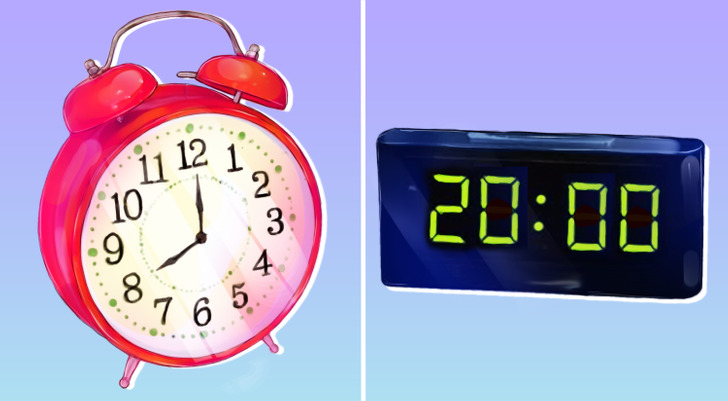Why There Is No Single Time System in the World
When answering the question “What time is it?” some people may say “half past eight” while others may say “twenty thirty.” Of course, all of them mean the same time, they just say it in a different way.
5-Minute Crafts decided to find out why there are different time formats on the Earth.
24-hour clock

The 24-hour clock has its origins in the Egyptian astronomical system of decans. It has been used by scientists, astronomers, and navigators for centuries. The very first public mechanical clock was also a 24-hour clock.
According to this system, a day is divided into 24 hours and lasts from midnight to midnight. Nowadays, this time notation is the most popular in the world: computers in most countries show it by default (unless there are separate settings for a particular region).
The 24-hour time notation is convenient because it prevents any ambiguity. For example, in countries where a 12-hour time is adopted, they still use the 24-hour clock in the practice of medicine because it helps you know exactly when you should take your pills, get medical procedures, etc.
12-hour clock

So, if the 24-hour clock is so convenient, why is there a different time system? There is a perfectly logical answer to this question. The day, as you know, can be divided into 2 periods, or cycles: day and night. It was this fact that became the reason for the emergence of another time system. Originally, there were 2 cycles: one cycle was tracked by the position of the Sun (day), and the other cycle was tracked by the position of the Moon and stars (night). This eventually evolved into the two 12-hour periods that are used today. One, called “a.m.” that starts at midnight, and the other one called “p.m.”, which starts at noon.
The designation of “a.m.” comes from the Latin ante meridiem, meaning “before noon,” and “p.m.” comes from post meridiem (after noon). In some countries, the 12-hour clock is the dominant written and spoken time system: mainly in Great Britain, Ireland, Canada, Australia, New Zealand, and India. Some countries in Europe and Latin America use a combination of the 12-hour and 24-hour time systems, preferring the 12-hour clock in spoken language and using the 24-hour clock in written and formal contexts.
Why there is no single time system

As mentioned above, both time systems have their own history and reasons for their appearance. Each of them is convenient in its own way, and it can be quite difficult for people who are used to a certain system to switch to another. Early mechanical clocks used to show 24 hours, but over time it became clear that the 12-hour clock was simpler and cheaper. To this day, the majority of analog clocks and watches use this time system. However, 24-hour clocks have been used for centuries and are likely to continue to be used for many years to come.